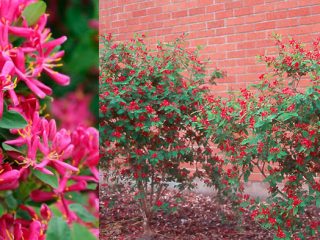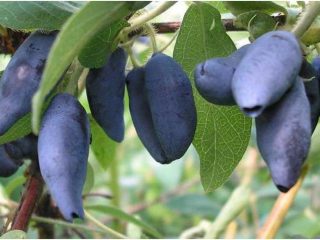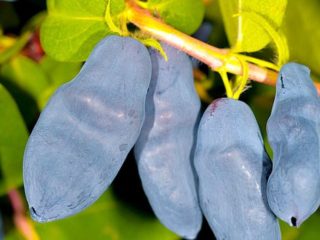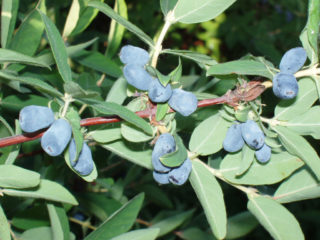Content
- 1 Features of honeysuckle propagation
- 2 Propagation times for garden honeysuckle
- 3 Methods of propagation of honeysuckle
- 4 Seedling care
- 5 Useful tips
- 6 Conclusion
Propagating honeysuckle will not be difficult - even a gardener with little experience can cope with it if you follow simple rules. The shrub has received recognition for its decorative and taste qualities, unpretentiousness, and also for the ability to easily propagate it.
Features of honeysuckle propagation
The shrub can be propagated by seeds and vegetative methods: layering, cuttings (green and lignified), dividing the bush and shoots. If you need to quickly get a small number of seedlings, the best way to propagate honeysuckle is to root cuttings. If a significant expansion of crop plantings is planned, then it is better to propagate it by cuttings. In this case, it is preferable to use green shoots, since they take root best.
Particular attention is paid to the timing of preparing the material and planting it in open ground.
Propagation times for garden honeysuckle
The best time to propagate honeysuckle depends on the method chosen. Throughout the season, you can carry out certain work on its breeding. In order for honeysuckle to take root well in a new place, when planning plantings it is necessary to take into account the peculiarities of the growing season of this crop.
How to plant honeysuckle in spring
Spring planting of honeysuckle has its own specifics, since the growing season of this crop begins early - from the end of March the buds are already blooming, which means that it is undesirable to disturb the bush after this period.
In the spring (early March) you can propagate honeysuckle by root suckers, dividing the bush, and transplant cuttings planted last season into open ground. Also in March - April, seeds are sown for seedlings.
At a later date, only seedlings with a ball of earth are rooted in order to disturb the root system as little as possible.
Also in the spring, you can propagate honeysuckle by layering from the bush, and the days of May are the right time for cutting and rooting green cuttings. It is during this period that seedlings take root most successfully.
How to plant honeysuckle in summer
Honeysuckle can be propagated in summer, but this is not the best time to plant it in open ground. According to reviews, many gardeners successfully plant honeysuckle throughout the growing season, including in the summer months.
In the first few weeks of June, green cuttings continue to be harvested and layering is rooted.
How to plant honeysuckle in the fall
Honeysuckle is one of the garden crops in which the growing season ends early - by the beginning of August, the growth of branches stops until spring, so most often the crop is planted in the ground from August to October.
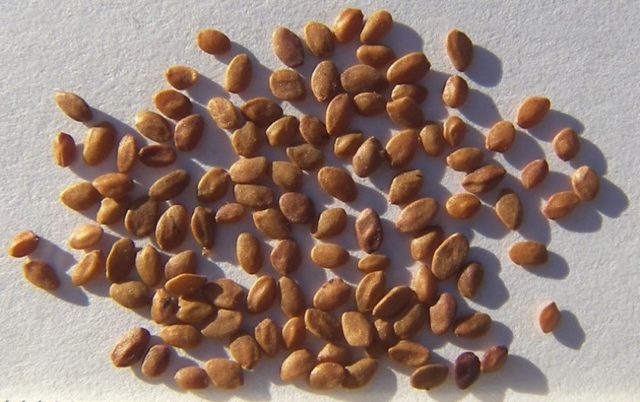
In September–October, the crop can be propagated by seeds; at this time, seedlings begin to be driven out
In the fall, starting from the second half of September, lignified honeysuckle cuttings are harvested, at which time the bushes can be planted.
Methods of propagation of honeysuckle
The shrub is one of those unpretentious crops that are easy to propagate both by seeds and vegetatively. The seed method is considered the least effective. It is most convenient to propagate the plant by layering, division, cuttings and root shoots.
Reproduction of honeysuckle by layering
The easiest way to get young specimens is to propagate them by layering from the mother. It is suitable if the bush has reached the age of 3–5 years. In spring or in the first weeks of summer, it is necessary to find young shoots located near the ground, dig furrows in the soil, bend down the intended branches and secure them with wire loops. Layers must be watered regularly. When they take root, you can separate them from the mother plant, but you should not rush into replanting - only shoots with well-developed, strong roots will successfully take root in a new place.
How to plant honeysuckle by dividing the bush
Dividing the bush is also a simple way to propagate honeysuckle; this procedure is carried out in spring or autumn.
They operate according to the following algorithm:
- the bush is dug up, the root system is freed from excess soil;
- the branches are divided into the required number of parts, the roots are cut;
- the sections are treated with wood ash;
- the resulting plants are planted.
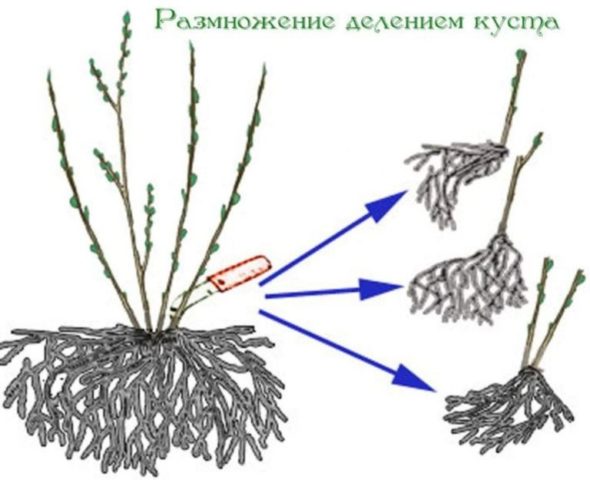
When propagating honeysuckle, you can separate any number of shoots
Propagation of honeysuckle by seeds
Seed propagation of honeysuckle is not the most effective way to obtain young plants. In the vast majority of cases, shrubs grown in this way will not have the varietal characteristics of the mother. Only 3–5% of seedlings will produce truly high-quality specimens; in other cases, the decorative properties and taste of the berries will be lost.
If you need to propagate honeysuckle by seeds, and select the material yourself, then you must adhere to the following algorithm:
- Choose large, well-ripened berries from the healthiest and most developed bushes.
- Squeeze out the juice with your hands as thoroughly as possible.
- The squeezed berries are placed in water.
- When the seeds separate from the peel and settle to the bottom of the container, they are collected.
- The seed material is dried and stratified for several months at temperatures from 0 to +3°C.
It is preferable to sow seeds at the very beginning of spring, in March - April, then seedlings will appear over the summer. However, you can sow them in the fall. To force seedlings, it is better to use containers in which the seeds are buried 5–7 mm. A peat-sand mixture enriched with humus is used as a substrate. You can expect the first shoots to appear in 3–4 weeks.
How to propagate honeysuckle by cuttings
Many gardeners recommend propagating honeysuckle by cuttings. You can use both green and lignified shoots, but you should keep in mind that the technology for growing shrubs in these cases is different.
Propagation of honeysuckle by green cuttings
The preparation of planting material begins at the very end of spring, when fruit ovaries begin to form. A sign that the shoots are ready is that they become brittle when bent. Elastic soft shoots are not suitable for planting.
The key to successful survival is the correct preparation of planting material:
- branches 8–13 cm long are cut from the central part of the shoot;
- the lower cut is made at an angle of 45–50 degrees, the upper one should be straight and 20 mm above the last bud;
- each segment should have 3–5 internodes;
- at the bottom node only the buds should be left, the leaves should be removed;
- the leaf plates of the upper and middle nodes are cut in half.
The planting material is rooted as follows: the lower part of the cuttings is soaked in a root growth stimulator, placed in a mixture of 1 part peat and 3 parts sand, and covered with film. At a temperature of +23-25°C and high humidity, the cuttings take root within 1–2 weeks. Then they can be replanted in the same season or wait until next spring.
It is possible to propagate honeysuckle by rooting sections of branches directly into the ground, as shown in the video below.
https://www.youtube.com/watch?v=7vJ4aPHOtaA
Propagation of honeysuckle by woody cuttings
Using lignified cuttings is also possible, but this method is less effective. According to some data, their survival rate rarely exceeds 20%.
Planting material is harvested either in early spring, before the start of sap flow, or in the fall - from the last days of September to mid-October.
To successfully propagate honeysuckle using this method, you need to consider the following recommendations:
- For cuttings, one-year growth with a thickness of 1 cm or more is suitable;
- prepare branches no more than 20 cm long;
- each branch segment should have 3–5 internodes;
- if planting material is prepared in the fall, until spring it is placed in sawdust, sand or damp burlap pre-treated with a fungicide; it is also possible to bury the cuttings in the ground;
- in spring the branches are cut short, no more than 12 cm in length;
- The cut is made oblique from below, straight from above, departing about 1 cm from the upper bud.

Lignified cuttings should have 3–5 buds
In the southern regions, cuttings can be rooted directly into open ground; in areas with a cold climate, they are first placed in nurseries. In both cases, the soil is thoroughly watered, a root formation stimulator is added and treated with fungicides. The distance between the seedlings should be at least 12 cm. Next, they are provided with high humidity and a temperature of 23–25 °C, for which they are covered with film. After a few weeks, the first roots appear and the cover is removed. The seedlings are transferred to a permanent place the following year in the spring.
Reproduction of honeysuckle by shoots
One of the methods of vegetative propagation of honeysuckle is growing from root shoots. Not a lot of planting material is obtained from such shoots, but it is of good quality.
To propagate a crop by shoots, you must adhere to the following rules:
- the procedure is carried out in spring or autumn;
- choose the strongest shoots;
- together with the root system, they are separated from the bush;
- soak for several hours in a growth stimulator;
- planted immediately in open ground.
Seedling care
To successfully propagate honeysuckle, it is not enough to properly prepare planting material. It is also necessary to create conditions as close to natural as possible. Sunny or semi-shaded places away from noisy areas are suitable for planting. You need to choose a place and prepare the soil in advance. Due to the delicate and fragile root system, the bush suffers greatly during transplants.
The culture is not very demanding on the substrate, but heavy clay soils in which moisture stagnates are not suitable for it.
Newly rooted seedlings need to be tied up, watered well and the surrounding circles mulched. The best mulch is grass clippings, which must be renewed periodically. If the planting hole has not been properly prepared, the seedling should be fertilized with some organic fertilizer. If the soil has been pre-treated, fertilizing begins no earlier than 3 years after planting.
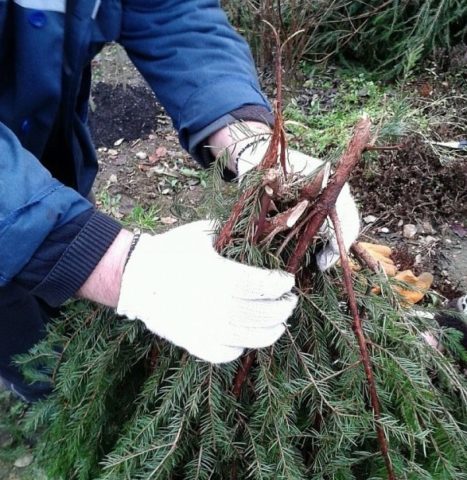
It is better to cover young plants grown from seeds with spruce branches for the winter.
If the plantings are not mulched, for the first 3 seasons they only need watering, hilling, weed removal, surface loosening and disease prevention.
Before the bush reaches the age of 5–7 years, it is undesirable to carry out digging and deep loosening of the tree trunk circle, so as not to damage the root system. Pruning can begin in the fifth year of planting honeysuckle.
Useful tips
To properly propagate honeysuckle, it is useful to listen to the advice of experienced gardeners:
- It is very important to harvest green cuttings at the time when green berries begin to form. At this moment, their rooting capacity is maximum;
- if a young plant is obtained from seeds, it is advisable to plant it in open ground only in the next season so that it does not suffer from winter frosts;
- to propagate honeysuckle by cuttings, you should not cut the shoots too long, otherwise they will devote all their energy to the growing season and not to the formation of the root system;
- It is recommended to plant several varieties of honeysuckle on the site at once, then it will bear fruit well.
Conclusion
Honeysuckle can be propagated in any convenient way. It is important to remember that not all methods are equally effective, however, compliance with the timing and rules of breeding this crop significantly increases the chances of success.



